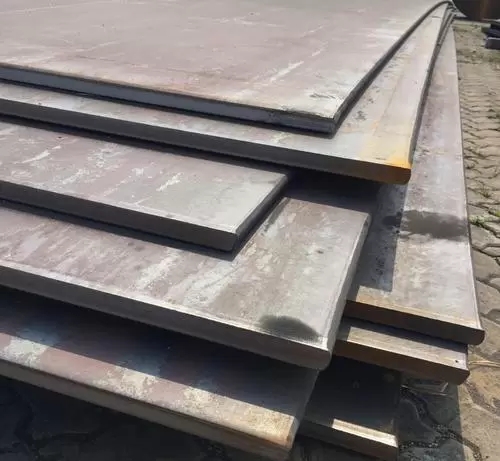Product
Contact us




High-strength structural plates
 0757-28908555
0757-28908555
In terms of material characteristics, common high-strength structural plates are mostly low-alloy high-strength structural steel plates. Take Q550D steel plate as an example; it is one of the mainstream high-end structural steel grades in domestic engineering applications. In its grade, "Q" represents yield strength, which is the first letter of the Chinese pinyin for "qu" (yield). "550" indicates that the minimum yield strength is 550MPa (when the thickness is ≤50mm). "D" represents the quality grade, meaning that the steel plate is required to pass a low-temperature impact test at -20℃ with an impact energy of ≥34J. Such high-strength structural plates have undergone careful adjustment in chemical composition, containing appropriate amounts of basic elements such as carbon, silicon, and manganese, as well as added alloying elements like chromium (Cr), nickel (Ni), copper (Cu), and molybdenum (Mo). The addition of these alloying elements has significantly improved the comprehensive performance of the steel plates.
High-strength structural plates possess a series of remarkable performance advantages.
High strength: They have much higher yield strength and tensile strength than ordinary plates. For instance, the Q550D steel plate has a yield strength of ≥550MPa when its thickness is ≤50mm, with a tensile strength ranging from 670MPa to 830MPa. As for the S500Q steel plate, its yield strength is ≥500MPa when the thickness is between 3mm and 50mm, and ≥480MPa when the thickness is more than 50mm to 100mm. These plates can withstand high loads and pressures, effectively reducing the size and weight of structural components without compromising the load-bearing capacity of the structure. They have significant advantages in projects with requirements for space utilization and weight restrictions.
Good toughness: When subjected to impact or vibration, high-strength structural plates can maintain their integrity and are not prone to fracture or breakage. For example, the Q550D steel plate has an impact energy of ≥40J (longitudinal direction) in a low-temperature environment of -20℃, and the actual internal production control often reaches ≥40J. This characteristic enables it to perform excellently in cold regions or projects with dynamic loads, ensuring the safety and stability of the structure under extreme conditions.
RELATED PRODUCTS
Products
-
No Data




